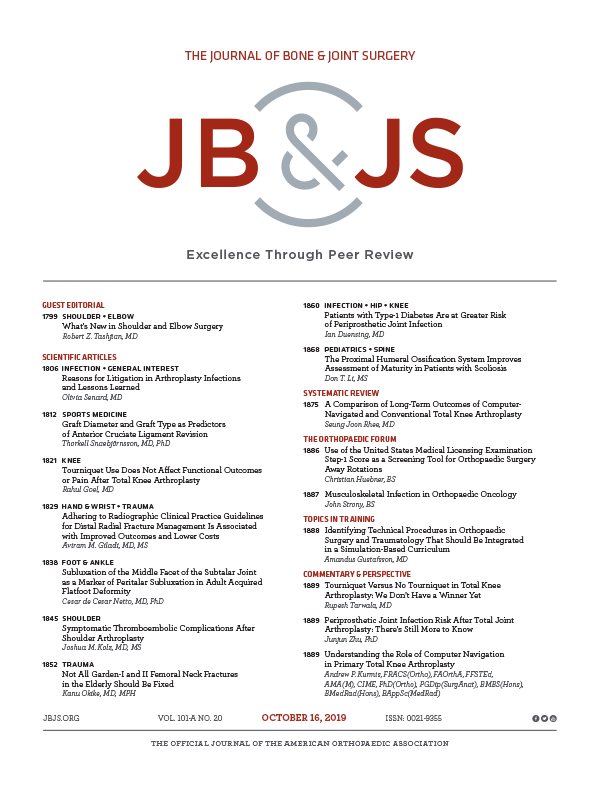
Open vs. arthroscopic repair after anterior shoulder instability with disease-specific QOL

Open vs. arthroscopic repair after anterior shoulder instability with disease-specific QOL
A randomized clinical trial comparing open and arthroscopic stabilization for recurrent traumatic anterior shoulder instability: two-year follow-up with disease-specific quality-of-life outcomes
J Bone Joint Surg Am. 2014 Mar 5;96(5):353-60Synopsis
196 patients with recurrent traumatic anterior shoulder instability were randomized to undergo open or arthroscopic repair to compare differences in disease-specific quality of life and recurrent instability over a period of two years. The results from this trial indicate that both procedures provided a significant improvement in disease-specific quality of life, with not differences between group...
To view the full content, login to your account,
or start your 30-day FREE Trial today.
FREE TRIAL
LOGIN
Forgot Password?
Explore some of our unlocked ACE Reports below!

Learn about our AI Driven
High Impact Search Feature
Our AI driven High Impact metric calculates the impact an article will have by considering both the publishing journal and the content of the article itself. Built using the latest advances in natural language processing, OE High Impact predicts an article’s future number of citations better than impact factor alone.
Continue



 LOGIN
LOGIN

Join the Conversation
Please Login or Join to leave comments.